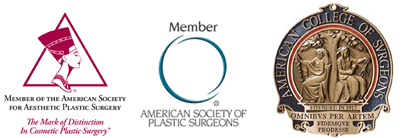After cosmetic surgical procedures, pain medications can be difficult to tolerate and important advise can help recovery. After many plastic surgery operations like tummy tuck, breast enlargement, and liposuction – pain pills are necessary for comfort and to help with recovery. Often this means taking a narcotic pain pill. Some of the most common narcotic pills prescribed are Percocet, Vicodin, and Tylenol with Codeine. The “seesaw” is a visual aid to understand the benefits and side effects of narcotic pills. A patient from Dover, De asked me to review the concepts that are described in detail below.
There is a critical difference between allergies and side effects. Everyone needs to understand this difference. Allergies are not common with pain pills. Allergies cause problems such as swelling and breathing problems. This can be serious, and the medication should be stopped immediately. This is a true allergic reaction like a bee sting reaction.
Side effects of pain pills, in contrast to true allergies, are extremely common. The most commen side effects are nausea and vomiting, itching, constipation, and generalized malaise (feeling poorly). Sides effects in general are not dangerous but need to be managed to minimize the problem.
After a tummy tuck for example, narcotic pain pills can be necessary to help with the pain. A patient will take pain pills to help with the discomfort of the operation. The patient might unfortunately have to suffer thru the side effects. So a key question is: which is worse- the pain or the side effect? Like a “seesaw,” one side might be higher or worse than the other. For example, if pain is really “bad,” than take the pain pills and try and tolerate the side effects. In contrast, if the pain is not that bad, and side effects are horrible, than stop taking the pain pills to lessen the side effects. Think of it like a seesaw. Which end is up – pain or the side effects. How you respond depends on which is worse.
Nausea and Vomiting:
Try taking the pain medication with food. This makes a huge difference. It might be counter intuitive, as with many flu symptoms, keeping the stomach empty helps with vomiting. But with pain pills, food in the stomach makes a tremendous difference. If you can get food down first, it will really help the patient tolerate the pills.
Itching:
This is because the narcotic causes a mast cell release. This leads to the itching. Benedryl can be used to help with this side effect. The benedryl pills can also help with sleep, so you can use this to your advantage before nighttime. Benadryl and Hydrocortisone creams can also be used to help with itching and your plastic surgery recovery.
Constipation:
Pain pills cause constipation by slowing bowel motility. Typical recommendations for constipation is the use of Colace. This helps costipation because it decreases hard bowel movements. However, the better choice is Milk of Magnesia. Take one tablespoon twice a day. This increases bowel motility and should do the trick for most. I also do not mind coffee and prune juice or other natural laxatives, if desired. Enemas (such as Fleets Enema) can be used for those who don’t mind them or for those who need extra help to get the bowels moving.
A final critical piece of information. STOP the medication that’s causing the problem. It’s the pain medicine! So if the side effect of constipation is the problem. Stop the pain pills to get the best result. If pain is still an issue, try and back off the narcotic pills to lessen the constipation and use Tylenol or Motrin instead.
Generalized Malaise:
This is the doctor term for feeling poorly. It’s interesting that pain pills are used by some drug addicts for abuse to feel better. However, for many people the effect is the opposite. This side effect is feeling really poorly and overall bad. It’s called malaise. If you are feeling this way after surgery, try and get off the pain pills. You will probably slowly start to feel better. It will aid your cosmetic surgery recovery
Managing Pain after Cosmetic Surgery and Dealing with the Side Effects – The Seesaw!
I will recommend to patients to think of pain and side effects like a seesaw. Which is worse? Is the pain worse from the surgery? Or are the side effects worse from the medication. If the pain is worse, than you have to deal with the side effects. If the side effects are worse, than you can stop the pain pills and the effects will resolve or go slowly away.
Don’t under estimate how well Tylenol and Motrin work to elevate and reduce pain. These medications don’t cause nausea and vomiting.
I am a board certified plastic surgeon who practices exclusively cosmetic surgery. Please come in for a complimentary consultation. Details of your cosmetic procedure and your surgical plan will be discussed completely. I hope this writing helps with your recovery from cosmetic surgery.

